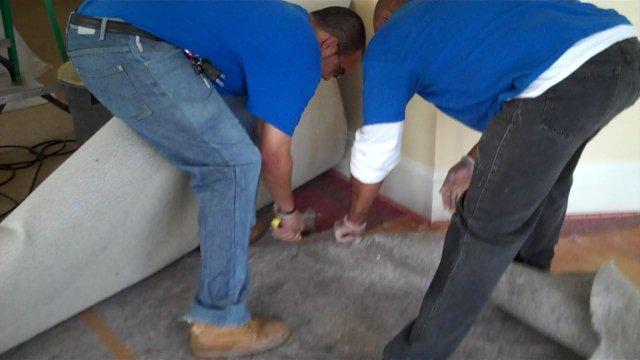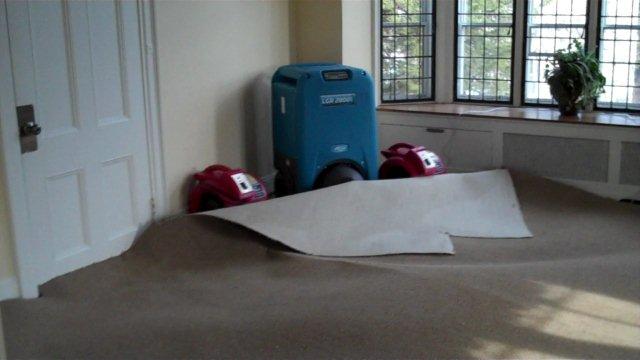In the aftermath of a flood, before drying a wet carpet and pad, a Water Damage Technician first must determine if the wet carpet is salvageable. Once the Technician acknowledges that the carpet and pad can be saved, he/she will begin the drying process.
There are three basic approaches a water damage restorer may take when drying a wet carpet and pad.
In-place drying: This involves a technician extracting as much of the water from the carpet and cushion as possible while the carpet is still attached to the tack strip.
Full-floating: First the carpet is disengaged from the tack strip holding it in place, The wet cushion is then removed and disposed of. The carpet is then re-attached to the tack strip and one or more air movers are placed under the edge of the carpet which causes it to lift up and float. Some restorers, depending on subflooring and the type of carpeting may not “float” the carpeting but rather leave the carpet flat and put the air movers on top of the carpeting. Once the carpet and subflooring are dry, a new cushion will have to be put in place and the carpet reinstalled.
Partial floating is when the carpeting is disengaged from the tack strip at a corner of the room, and then an air mover is placed between the carpet and cushion. Warm dry air is then blown under the carpet, floating up the carpet, thus drying both the carpet and cushion. When the carpet, cushion, and subfloor is dry, the carpet will need to be reinstalled.
I have been to many homes during the years and realized that many homeowners’ only concern was their wet carpet and padding. Little did they know that because their carpeting was wet so were their walls. When I arrived at their home I would use a moisture detector to show the homeowners that their walls were also wet.



